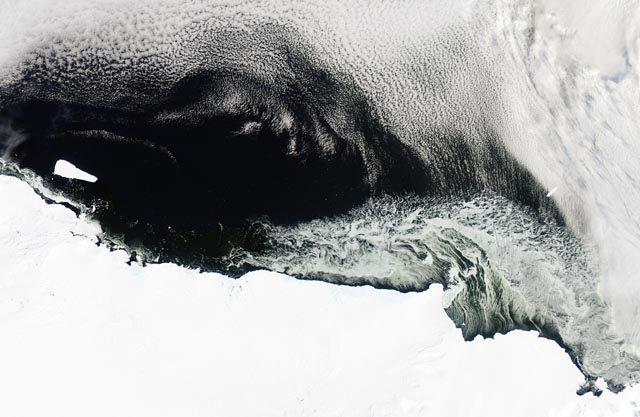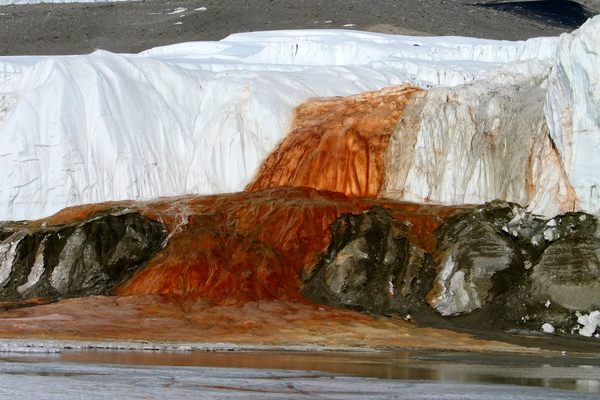What Happens When the Growing Rift in an Antarctic Ice Shelf Finally Breaks?
A new, giant iceberg could be born any day now.

Any day now, it seems, the world is going to have a new, record-breaking iceberg. For about three years now, scientists have been monitoring a rift in Antarctica’s Larsen C ice shelf, and today Project MIDAS, which has been closely tracking the rift’s progress via satellite, said that the rift was opening even more rapidly and warned that “it won’t be long now…”
When the iceberg finally breaks off from the ice shelf, what happens next?
It will slowly drift away.
This giant chunk of ice, which will become one of the largest icebergs ever recorded, is already floating on the sea. When it breaks off from the ice sheet, it won’t rush away, but, subject to ocean currents, will likely follow the coast and head out into the Atlantic Ocean.
It will be noisy.
When ice shelves calve icebergs, the ocean gets loud. After B-15, the largest iceberg observed to date, broke off of the Ross Ice Shelf in 2000, scientists monitoring underwater noises with hydrophones picked up strange signals thousands of miles away. They later traced them back to the remnants of B-15—giant icebergs in their own right—which continued to break up over time, filling the water with mournful creaks, cracks, and booms.

It will break up into smaller pieces.
Sooner or later, the iceberg formed from Larsen C will break up into smaller pieces. But small is relative. The new iceberg will be 10 percent of the Larsen C ice shelf, and the rift runs more than 120 miles long. The icebergs formed from its break-up could also be giant. The largest fragment of B-15, for instance, was still 2,470 square miles in size.
These fragments could be around for years.
Depending on how fast they drift out to slightly warmer parts of the ocean, the iceberg and its fragments could stick around for years. Fifteen years after B-15 broke off the Ross Ice shelf, there were still eight fragments of the original iceberg in the ocean. The largest, B-15T, was 12 miles long and 8 miles wide.
The Larsen C ice shelf could continue to disintegrate.
Scientists studying this iceberg calving event don’t see a link to climate change, but it’s still bad news for the long-term survival of the ice shelf. Losing this chunk of ice will make the Larsen C ice shelf less stable, and the Project Midas team has found that, like the Larsen B ice shelf, which lost a big chunk in 2002, the Larsen C ice shelf could start disintegrating after the new iceberg drifts away.












Follow us on Twitter to get the latest on the world's hidden wonders.
Like us on Facebook to get the latest on the world's hidden wonders.
Follow us on Twitter Like us on Facebook